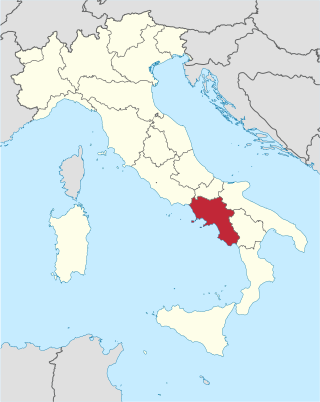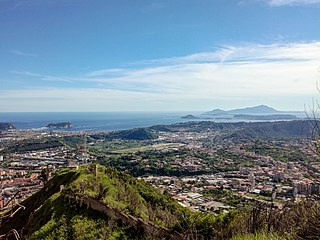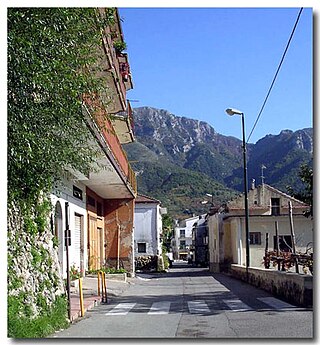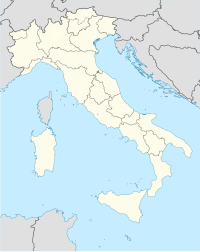
Campania is an administrative region of Italy; most of it is in the south-western portion of the Italian peninsula, but it also includes the small Phlegraean Islands and the island of Capri. The capital of the Campania region is Naples. As of 2018, the region had a population of around 5,820,000 people, making it Italy's third most populous region, and, with an area of 13,590 km2 (5,247 sq mi), its most densely populated region. Based on its GDP, Campania is also the most economically productive region in southern Italy and the 7th most productive in the whole country. Naples' urban area, which is in Campania, is the eighth most populous in the European Union. The region is home to 10 of the 58 UNESCO sites in Italy, including Pompeii and Herculaneum, the Royal Palace of Caserta, the Amalfi Coast and the Historic Centre of Naples. In addition, Campania's Mount Vesuvius is part of the UNESCO World Network of Biosphere Reserves.

Maria was Queen of Sicily and Duchess of Athens and Neopatria from 1377 until her death.

Capri is an island located in the Tyrrhenian Sea off the Sorrento Peninsula, on the south side of the Gulf of Naples in the Campania region of Italy. The main town of Capri that is located on the island shares the name. It has been a resort since the time of the Roman Republic.

Positano is a village and comune on the Amalfi Coast, in Campania, Italy, mainly in an enclave in the hills leading down to the coast.

Ischia is an Italian island in the Tyrrhenian Sea. It lies at the northern end of the Gulf of Naples, about 30 km (19 mi) from Naples. It is the largest of the Phlegrean Islands. Roughly trapezoidal in shape, it measures approximately 10 km (6 mi) east to west and 7 km (4 mi) north to south and has about 34 km (21 mi) of coastline and a surface area of 46.3 km2 (17.9 sq mi). It is volcanic and almost entirely mountainous; the highest peak is Mount Epomeo, at 788 m (2,585 ft). The island is very densely populated, with 62,000 residents.

The volcanism of Italy is due chiefly to the presence, a short distance to the south, of the boundary between the Eurasian Plate and the African Plate. Italy is a volcanically active country, containing the only active volcanoes in mainland Europe. The lava erupted by Italy's volcanoes is thought to result from the subduction and melting of one plate below another.

The Phlegraean Fields is a large region of supervolcanic calderas situated to the west of Naples, Italy. It was declared a regional park in 2003.

The Gulf of Naples, also called the Bay of Naples, is a roughly 15-kilometer-wide (9.3 mi) gulf located along the south-western coast of Italy. It opens to the west into the Mediterranean Sea. It is bordered on the north by the cities of Naples and Pozzuoli, on the east by Mount Vesuvius, and on the south by the Sorrento Peninsula and the main town of the peninsula, Sorrento. The Peninsula separates the Gulf of Naples from the Gulf of Salerno, which includes the Amalfi Coast.

Tramonti is a town and comune in the province of Salerno in the Campania region of south-western Italy. It is located in the territory of the Amalfi Coast.

Vivara is a satellite islet of Procida, one of the three main islands in the Gulf of Naples.

John Joseph of the Cross - born Carlo Gaetano Calosinto - was an Italian priest and a professed member from the Order of Friars Minor who hailed from the island of Ischia. He had a reputation for austerity and for the gift of miracles and was appointed Master of Novices.

Ischia is a town and one of the six comuni on Ischia island, in the Tyrrhenian Sea. With a population of about 18,000, it's the largest settlement on the island.
The Campanian Archipelago, also called Neapolitan Archipelago, is an archipelago in the Tyrrhenian Sea, in southwestern Italy. It principally comprises 5 islands: Capri, Ischia, Nisida, Procida, and Vivara. Most of the archipelago belongs to the Metropolitan City of Naples.

The Castello di Milazzo is a castle and citadel in Milazzo, Sicily. It is located on the summit of a hill overlooking the town, on a site first fortified in the Neolithic era. The Greeks modified it into an acropolis, and it was later enlarged into a castrum by the Romans and Byzantines. The Normans built a castle, which was further modified and enlarged during the Medieval and Early Modern periods. It is now in good condition, and open to the public.

Villa Rufolo is a villa within the historic center of Ravello, a town in the province of Salerno, southern Italy, which overlooks the front of the cathedral square. The initial layout dates from the 13th century, with extensive remodeling in the 19th century.

The Ischia Film Festival (IFF) is an annual international film festival held in the Aragonese Castle on the island of Ischia, Italy in late June to early July. Founded in 2003 and as of 2023 still directed by Michelangelo Messina, the festival focuses on film locations. Feature films in competition are eligible for four awards, and there are separate awards for short films and other categories.
Santa Maria del Soccorso is a church located within the archaeological site of Villa Jovis, on the island of Capri, Italy. It is situated on the summit of the Lo Capo hill at the eastern extremity of the island. The chapel-like church, was constructed ca. 1610. Its fittings include a bronze statue of the Madonna, a 1979 gift of the Caprese painter Guido Odierna (1913-1991). In the late 19th century, hermit lived at the church, keeping a visitor's book and selling wine.

The Metropolitan City of Naples is an Italian metropolitan city in Campania region.

Corricella is a port on Procida in the Phlegraean Islands off the coast of Naples in southern Italy. It is known for its vibrantly colorful housing.



















